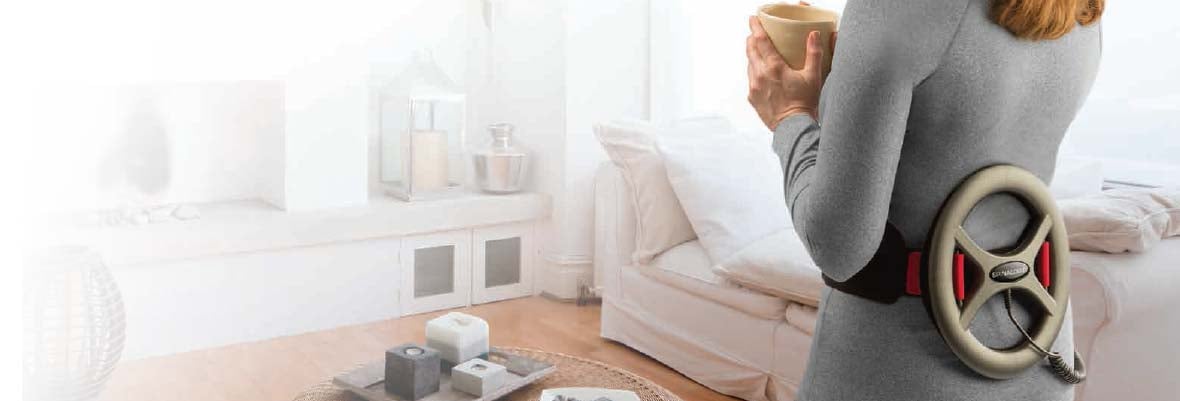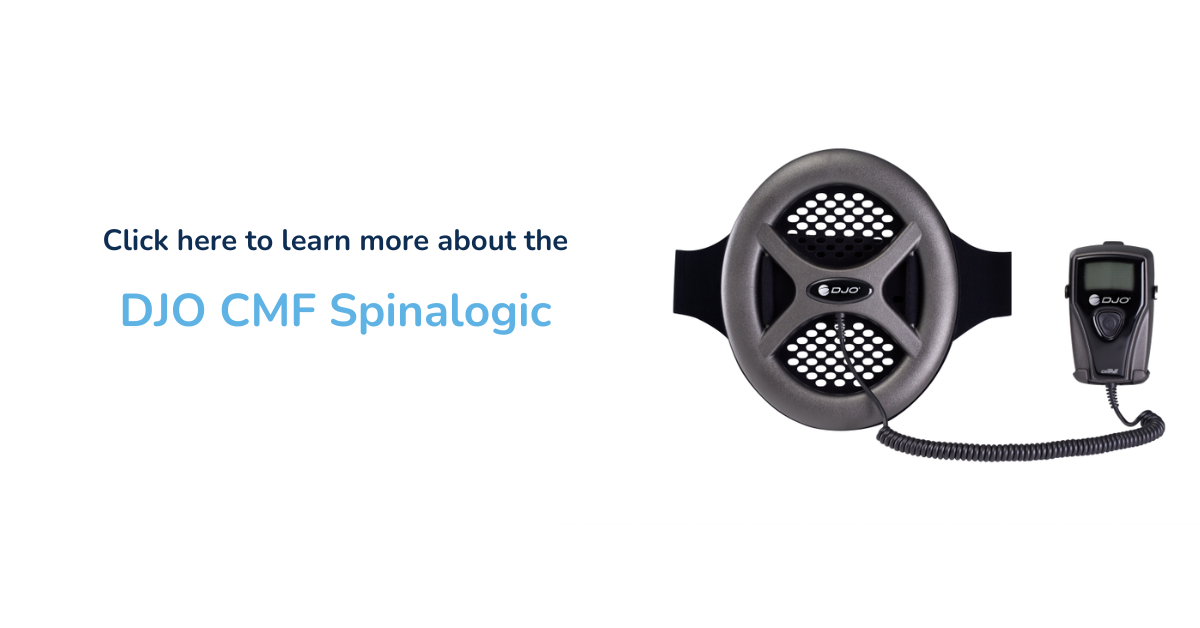Bone Growth Stimulator Therapy
Bone growth stimulator therapy is intended to improve bone formation after a partial or complete fracture or spinal fusion surgery. The stimulation is applied using a bone growth stimulator device over the affected area.
In this blog article we will review the different types of bone growth stimulators and their intended uses.
What Is Bone Growth Stimulator Treatment?
After a bone fracture or spinal (cervical or lumbar) fusion surgery a bone growth stimulator may be recommended by your doctor as an adjunct therapy. This means a bone growth stimulator is an additional treatment added to your primary care program. The treatment is pain-free and used to promote bone growth at the fracture or spinal fusion site.
Medical Necessity
Let your doctor know about any health condition which could affect how your bones heal when consulting with your doctor about a spinal fusion surgery or a bone fracture. There are pre-existing genetic conditions, as well as lifestyle choices, that can negatively impact how long your bones take to heal or the likelihood of successful new bone formation. Examples are included in the 'Delayed or non-union fracture risk' medically necessary reason below.
The following medical conditions are generally considered to be medically necessary reasons for a bone growth stimulator prescription:
- Long bone non-union fracture
- Failed fusion of a joint (other than spinal)
- Congenital pseudarthrosis
- Spinal fusion surgery adjunct therapy
- Delayed or non-union fracture risk due to alcoholism, chemotherapy, diabetes, obesity, osteoporosis, renal disease, tobacco use, steroid use
Indications for Use
The FDA defines the Indications for Use of a medical device in 21 CFR 814.20(b)(3)(i) as: "A general description of the disease or condition the device will diagnose, treat, prevent, cure, or mitigate, including a description of the patient population for which the device is intended." The general indication for use of a bone growth stimulator is to promote bone growth.
Traditional indications* for use that have been approved by the FDA include:
- treatment of an established non-union secondary to trauma of the appendicular system
- treatment of congenital pseudarthrosis
- treatment of failed fusions of the appendicular system
- early treatment of certain fresh fractures
- adjunct to lumbar or cervical spinal fusion
*The examples above do not represent all approved indications for use.
Treatment Use
Your doctor will provide instructions on the frequency of use and duration. Some bone growth stimulator treatments are performed multiple times daily while others are pre-set for a single 30 minute therapy session.
The therapy session duration is dependent upon the device manufacturer's recommended pre-set time or a maximum total therapy duration. A 30 minute therapy is representative of a pre-set therapy duration.
What Is A Bone Growth Stimulator?
Bone growth stimulators are classified as either invasive or non-invasive. Both types of devices will be described but the focus of this blog will be on non-invasive bone growth stimulators. Elite Medical Supply carries a variety of home-use bone growth stimulators. You can view them by visiting the Bone Growth Stimulator Product Page here.
Invasive Bone Growth Stimulator
An invasive bone growth stimulator is surgically implanted. The waveform generator is surgically implanted near the healing site. The electrodes are implanted at the fracture or fusion site. Invasive bone growth stimulators remain implanted for 6-9 months and are removed in a second surgical procedure.
Non-Invasive Bone Growth Stimulator
A non-invasive bone growth stimulator is a portable device that is worn outside the body during treatment. It consists of a waveform generator and a transducer. The waveform generator is either attached to the transducer to create a single unit or as a stand-alone unit. The transducer is a type of coil or electrode placed over the healing site. A lead wire is used to connect the waveform generator to the transducer when they are not a single unit.
Types of Therapy Output
Bone growth stimulators output either electrical or magnetic fields to promote bone growth. The transducer or electrode applied over the site delivers the non-invasive therapy output. The types of electrical and magnetic fields are described below.
- Capacitive Coupling (CC): The use of electrodes that are placed on the skin to allow for the current to flow across the treatment site.
- Pulsed Electromagnetic Fields (PEMF): A modulated electromagnetic field is generated near the treatment site though an external coil (transducer).
- Combined Magnetic Fields (CMF): A coil (transducer) generates a combination of a static and pulsed magnetic fields near the treatment site.
- Low Intensity Pulsed Ultrasound (LIPUS): Pulsed ultrasonic signals are generated using ultrasonic transducers.
Prescription Use Device
At this time, all bone growth stimulator devices require a prescription from a licensed medical practitioner per FDA regulation 21 CFR 801.109. Your doctor will provide a prescription that describes how the bone growth stimulator will be used (skeletal or spinal) which determines which type and model of stimulator is appropriate for your treatment.
We're Here to Help
The team of experts at Elite Medical Supply is here to help identify the right bone growth stimulator for your condition. We offer a wide selection of devices from world-class manufacturers to help alleviate the pain and heal your fracture or spinal fusion. Take a look at our selection of bone growth stimulators by clicking here.
When you're ready to order a brace or need assistance making a choice we're here to help. You can reach us at 866-712-0881, send us an email, or fill out a contact form.
Written by Elite Medical Supply of NY
Braces and Products Covered by Medicare
Browse ProductsRecent Posts
- Cervical Brachial Syndrome (Thoracic Outlet Syndrome): What You Need to Know
- Spinal Decompression at Home: What It Is, How It Works, and Whether It’s Right for You
- Manage Osteoarthritis Progression With a Quality Knee Brace
- Product Highlight: Aspen Active™ P-TLSO
- Understanding Radiculopathy: Causes, Symptoms, & Treatment Options
Topics
- Back Braces (39)
- Knee Braces (31)
- Medicare Beneficiaries (31)
- Pain (25)
- Non-Opioid (23)
- Medical Providers (19)
- Lower back pain (11)
- Product Highlight (11)
- Sciatica (11)
- Muscle Spasms (10)
- Decompression (9)
- Lumbago (8)
- Degenerative disc disease (6)
- Lumbar Spinal Stenosis (6)
- Spinal Stenosis (6)
- Working with your doctor (6)
- Fracture healing (5)
- Herniated Nucleus Pulposus (5)
- Bulging or herniated disc (4)
- Neuromuscular Electrical Stimulation (NMES) (4)
- Quadratus Lumborum Syndrome (4)
- SI Joint (4)
- SI Joint Dysfunction (4)
- Spondylolysis (4)
- Wrist Pain (4)
- Bone Growth Stimulator Therapy (3)
- Bone Growth Stimulators (3)
- Carpal Tunnel Syndrome (3)
- Kyphosis (3)
- Supine Cervical Traction (3)
- Unicompartmental Osteoarthritis (OA) (3)
- Wrist Brace (3)
- wrist tendinitis (3)
- Ambulatory Cervical Traction (2)
- Braces for Golf (2)
- Cervical Traction (2)
- Electrical Stimulation (2)
- Failed Spinal Fusion Syndrome (2)
- Lumbar compression fractures (2)
- Radiculopathy (2)
- Spondylolisthesis (2)
- Total Knee Replacement (2)
- Wrist Braces (2)
- Arthritis (1)
- Braces for skiing (1)
- Cervical Brachial Syndrome (1)
- De Quervain Syndrome (1)
- Digital DME Orders (1)
- Knee Brace Accessory (1)
- Knee Suspension Wrap (1)
- Knee brace support for skiing (1)
- Medicare Scam (1)
- Muscle Atrophy (1)
- PCL (1)
- Patellofemoral Pain Syndrome (1)
- TLSO (1)
- Thoracic Outlet Syndrome (1)
- Ulnar Tendinitis (1)


